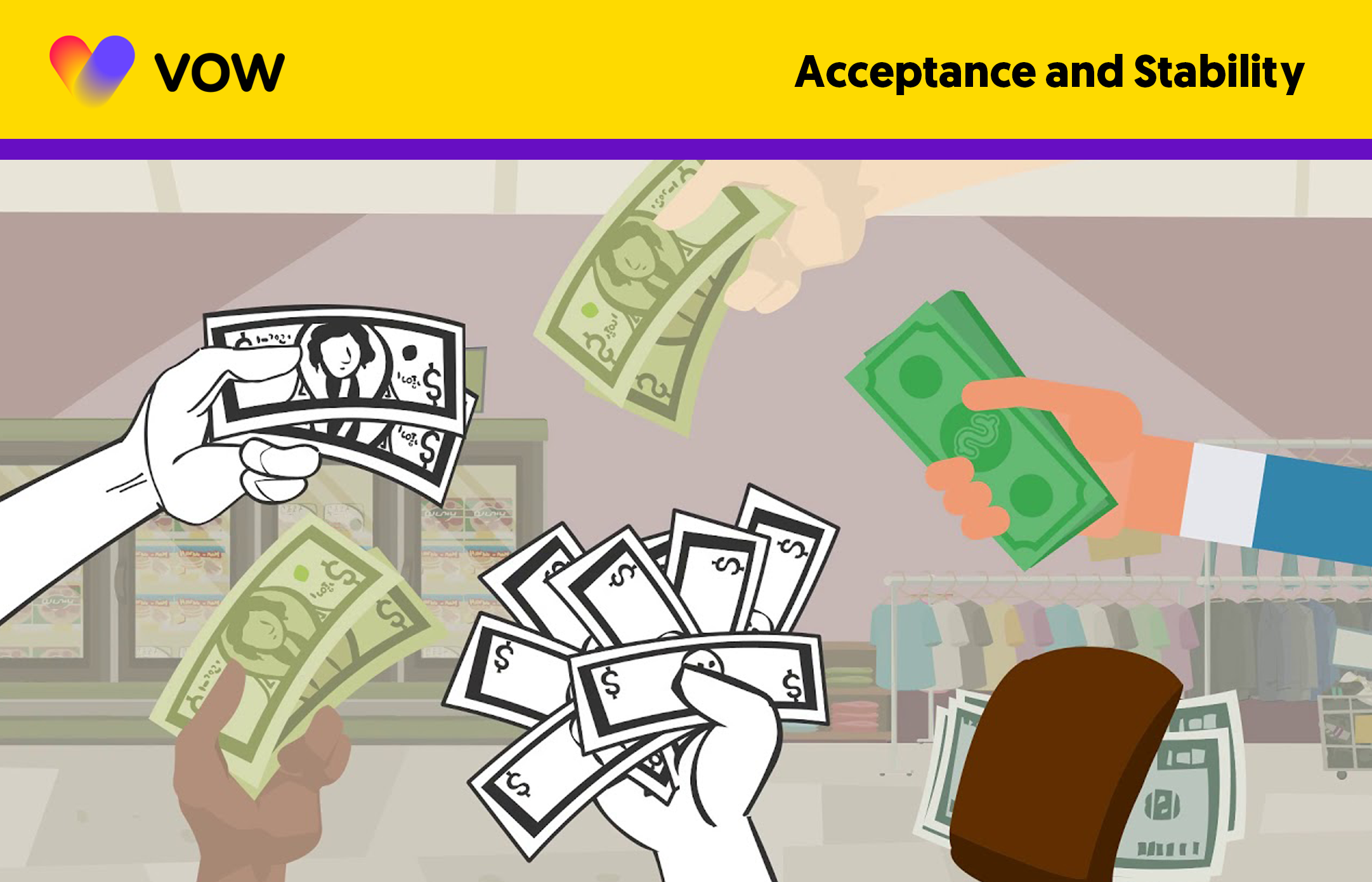“Total Belief” that I can re-use any currency I accept at the same value I accepted it is the fundamental key to a currency being adopted, and it is the hardest “nut to crack.”
For all fiat currency this “belief” is ultimately enforced by governments, and in the end – standing armies.
Other forms of currency do not, as of yet, have the luxury of this “backstop.”
Until Vow, there were only two alternative ways for maintaining stability in a currency.
1) Private companies like Tether or USDC take in dollars, “promising” to cash out users at any time, and guarantee they hold enough $ on account so that everyone could cash out at any time if required. This premise makes Tether and USDC types of hybrid e-money. Although they offer the crypto community highly valuable services, allowing any central party, no matter how regulated, to manage the money supply is the absolute anthesis of blockchain.
2) Algorithmic stable coins require locking up some sort of crypto asset to function – EG DAI or TERRA. They function by incentivising participants to maintain a fiat peg with some form of reward. Algorithmic stable coins are, of course, a step in the right direction (AKA decentralisation) yet given that they maintain a fiat peg due to the price of an underlying crypto asset and that they do not have a link to the “real world” they are still subject to relatively untested re-valuation / adjustments events.
Both these methods operate externally to the ecosystem where stability of currency is required. They also share two more clear commonalities.
1) Both these approaches attempt to maintain currency stability as a priority – assuming ACCEPTANCE BY MERCHANTS will certainly follow STABILITY.
However, stability is not the only element that ensures acceptance, for example, Diner’s card isn’t accepted everywhere. Why not?
2) Both approaches require vast inflows of capital in order to grow. Without attracting capital (either in fiat or in digital assets) a large enough demand cannot be established by retailers to make them bother participating.
The Vow ecosystem offers a completely different approach; an approach that makes it different from all known stable coins and complementary currencies to date.
Each vcurrency is designed to be a discount voucher, given away for free, to a customer, at a fixed value ($1, £1, €1), by a merchant. It acts as an alternative form of cashback reward. Every time a business distributes a vcurrency it simultaneously guarantees (or vows) to accept it back.
By distributing the vanguard-ship, or backstop function of currency to thousands of independent merchants (whose role is both distributor of currency and acceptor of currency), vcurrency ensures acceptance (on a micro level) prior to gaining stability (on a macro level).
1) The Vow ecosystem believes STABILITY can result from WIDESPREAD ACCEPTANCE of a growing group of MERCHANTS, even when there is no underlying asset.
2) Illustrated in point 1, The Vow ecosystem does not require external, underlying capital to grow.
